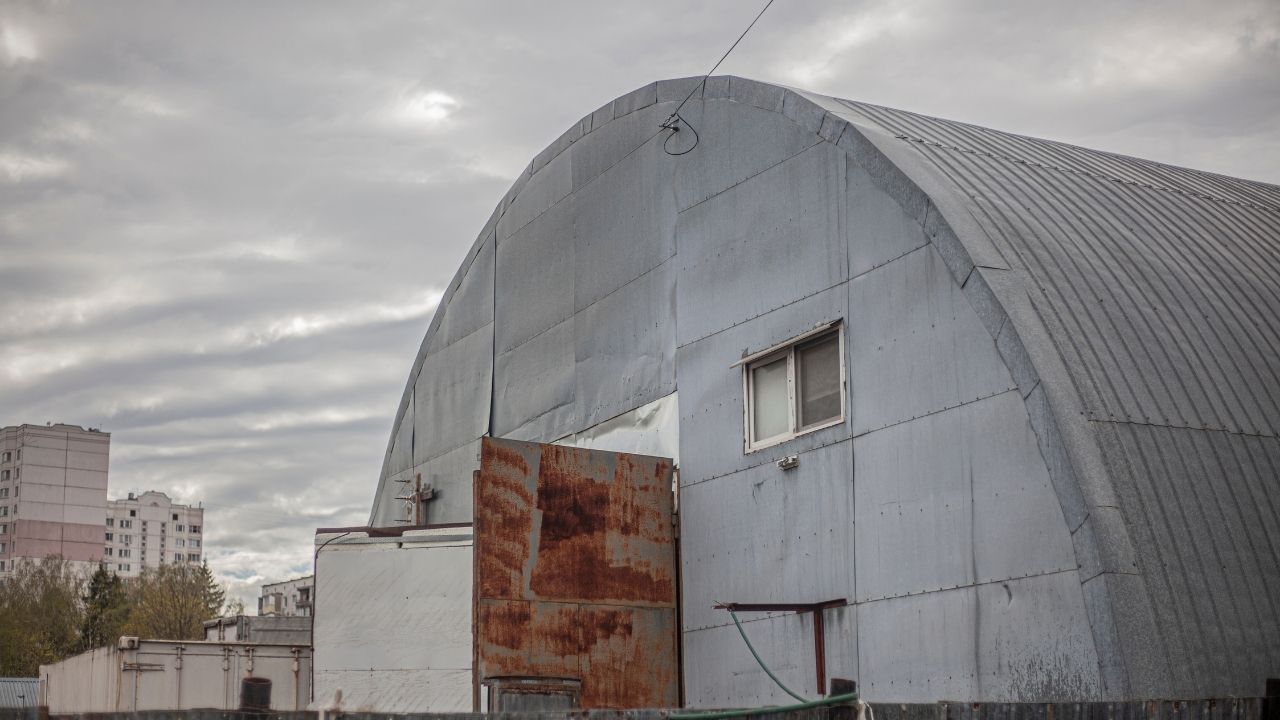Business
Temporary Warehouse Buildings

Temporary structures have become quite common nowadays. Most businesses and homeowners are choosing temporary buildings over traditional brick-and-mortar. The reason behind this is because of the plenty benefits that temporary structures offer over other types of buildings.
If you’re planning to set up a temporary warehouse building, then this article is for you. In this guide, we will highlight some of the benefits of temporary structures. We will also include some factors that you should consider when setting up temporary structures.
Quick and Easy to Setup
Temporary warehouse buildings are built using prefabricated materials. As such, the time used to set up the structure is quite short compared to what you will need when building a brick house. You will also spend less on labor costs.
Temporary buildings can be set up on any type of surface. Unlike brick houses, you may not need to build a concrete floor for your temporary structure. Looking at the construction expenses, setting up a temporary warehouse is cheaper.
Temporary Structures Are Versatile
Temporary buildings can be used for various purposes such as indoor stadiums, warehouses, residential structures, or even as greenhouses. Besides that, the structures can be customized depending on your architectural designs.
For example, if you’re planning to set up an indoor stadium, you can build it using industrial tents. You can opt to rent the tents if you’re going to use the structure for only a few days. Be sure to check out more temporary warehouse designs on Smart-Space.
Energy Saving Features
Most temporary buildings are fitted with energy-saving features. The buildings are fitted with huge windows and clear roofing to let in natural light during the day. The windows and doors also fit well to prevent heat loss during cold months. This way, your heating system will not overwork when warming the building.
Steel buildings also have insulation materials added to the walls. This extra padding ensures that the building stays warm. Temporary steel structures can be used as residential homes, classrooms, or even as offices. However, temporary steel structures can be more expensive.
Plenty of Space
Temporary warehouse buildings can be 12 meters tall in height. There is also no limit to the floor space, meaning that the building can be as big as you want it to be. Temporary buildings do not have support beams running through the middle. This means that you get plenty of open area.
The wide clearance ensures that you get plenty of storage space. If you’re using the building as a warehouse, trucks can also easily move in and out of the building.
Portable
If you’re looking to set up a semi-permanent structure that you can easily move around when needed, then you should consider temporary buildings. Temporary warehouse buildings are built using steel beams bolted onto each other to form a frame. The structures can easily be pulled down and transferred to a new location when needed.
Compared to permanent structures, all the materials used to set up temporary structures can be reused.
Bottom Line
Setting up temporary structures can take an average of four weeks. However, this time can change, especially if you need to get planning permission. The rules on whether you need a planning permission or not may vary depending on a couple of factors. First is how long you will use the building, and second is how tall the building will be.
Whenever you want to set up a temporary warehouse building, you need to consider what you need to use it for. This way, you can set your budget and have any customizations added as required.
Business
High Volume, High Value: The Business Logic Behind Black Banx’s Growth

In fintech, success no longer hinges on legacy prestige or brick-and-mortar branches—it’s about speed, scale, and precision. Black Banx, under the leadership of founder and CEO Michael Gastauer, has exemplified this model, turning its high-volume approach into high-value results.
The company’s Q1 2025 performance tells the story: $1.6 billion in pre-tax profit, $4.3 billion in revenue, and 9 million new customers added, bringing its total customer base to 78 million across 180+ countries.
But behind the numbers lies a carefully calibrated business model built for exponential growth. Here’s how Black Banx’s strategy of scale is redefining what profitable banking looks like in the digital age.
Scaling at Speed: Why Volume Matters
Unlike traditional banks, which often focus on deepening relationships with a limited set of customers, Black Banx thrives on breadth and transactional frequency. Its digital infrastructure supports onboarding millions of users instantly, with zero physical presence required. Customers can open accounts within minutes and transact across 28 fiat currencies and 2 cryptocurrencies (Bitcoin and Ethereum) from anywhere in the world.
Each customer interaction—whether it’s a cross-border transfer, crypto exchange, or FX transaction—feeds directly into Black Banx’s revenue engine. At scale, these micro-interactions yield macro results.
Real-Time, Global Payments at the Core
One of Black Banx’s most powerful value propositions is real-time cross-border payments. By enabling instant fund transfers across currencies and countries, the platform removes the frictions associated with SWIFT-based systems and legacy banking networks.
This service, used by individuals and businesses alike, generates:
- Volume-based revenue from transaction fees
- Exchange spreads on currency conversion
- Premium service income from business clients managing international payroll or vendor payments
With operations in underserved regions like Africa, South Asia, and Latin America, Black Banx is not only increasing volume—it’s tapping into fast-growing financial ecosystems overlooked by legacy banks.
The Flywheel Effect of Crypto Integration
Crypto capabilities have added another dimension to the company’s high-volume model. As of Q1 2025, 20% of all Black Banx transactions involved cryptocurrency, including:
- Crypto-to-fiat and fiat-to-crypto exchanges
- Crypto deposits and withdrawals
- Payments using Bitcoin or Ethereum
The crypto integration attracts both retail users and blockchain-native businesses, enabling them to:
- Access traditional banking rails
- Convert assets seamlessly
- Operate with lower transaction fees than those found in standard financial systems
By being one of the few regulated platforms offering full banking and crypto support, Black Banx is monetizing the convergence of two financial worlds.
Optimized for Operational Efficiency
High volume is only profitable when costs are contained—and Black Banx has engineered its operations to be lean from day one. With a cost-to-income ratio of just 63% in Q1 2025, it operates significantly more efficiently than most global banks.
Key enablers of this cost efficiency include:
- AI-driven compliance and customer support
- Cloud-native architecture
- Automated onboarding and KYC processes
- Digital-only servicing without expensive physical infrastructure
The outcome is a platform that not only scales, but does so without sacrificing margin—each new customer contributes to profit rather than diluting it.
Business Clients: The Value Multiplier
While Black Banx’s massive customer base is largely consumer-driven, its business clients are high-value accelerators. From SMEs and startups to crypto firms and global freelancers, businesses use Black Banx for:
- International transactions
- Multi-currency payroll
- Crypto-fiat settlements
- Supplier payments and invoicing
These clients tend to:
- Transact more frequently
- Use a broader range of services
- Generate significantly higher revenue per user
Moreover, Black Banx’s API integrations and tailored enterprise solutions lock in these clients for the long term, reinforcing predictable and scalable growth.
Monetizing the Ecosystem, Not Just the Account
The genius of Black Banx’s model is that it monetizes not just accounts, but entire customer journeys. A user might:
- Onboard in minutes
- Deposit funds from a crypto wallet
- Exchange currencies
- Pay an overseas vendor
- Withdraw to a local bank account
Each of these actions touches a different monetization lever—FX spread, transaction fee, crypto conversion, or premium service charge. With 78 million customers doing variations of this at global scale, the cumulative financial impact becomes immense.
Strategic Expansion, Not Blind Growth
Unlike many fintechs that chase customer acquisition without a clear monetization path, Black Banx aligns its growth with strategic market opportunities. Its expansion into underbanked and high-demand markets ensures that:
- Customer acquisition costs stay low
- Services meet genuine needs (e.g., cross-border income, crypto access)
- Revenue per user grows over time
It’s not just about acquiring more customers—it’s about acquiring the right customers, in the right markets, with the right needs.
The Future Belongs to Scalable Banking
Black Banx’s ability to transform high-volume engagement into high-value profitability is more than just a fintech success—it’s a signal of what the future of banking looks like. In a world where agility, efficiency, and inclusion define competitive advantage, Black Banx has created a blueprint for digital banking dominance.
With $1.6 billion in quarterly profit, nearly 80 million users, and services that span the globe and the blockchain, the company is no longer just scaling—it’s compounding. Each new user, each transaction, and each feature builds upon the last.
This is not the story of a bank growing.
This is the story of a bank accelerating.
-

 Tech4 years ago
Tech4 years agoEffuel Reviews (2021) – Effuel ECO OBD2 Saves Fuel, and Reduce Gas Cost? Effuel Customer Reviews
-

 Tech6 years ago
Tech6 years agoBosch Power Tools India Launches ‘Cordless Matlab Bosch’ Campaign to Demonstrate the Power of Cordless
-

 Lifestyle6 years ago
Lifestyle6 years agoCatholic Cases App brings Church’s Moral Teachings to Androids and iPhones
-

 Lifestyle4 years ago
Lifestyle4 years agoEast Side Hype x Billionaire Boys Club. Hottest New Streetwear Releases in Utah.
-

 Tech7 years ago
Tech7 years agoCloud Buyers & Investors to Profit in the Future
-

 Lifestyle5 years ago
Lifestyle5 years agoThe Midas of Cosmetic Dermatology: Dr. Simon Ourian
-

 Health6 years ago
Health6 years agoCBDistillery Review: Is it a scam?
-

 Entertainment6 years ago
Entertainment6 years agoAvengers Endgame now Available on 123Movies for Download & Streaming for Free
